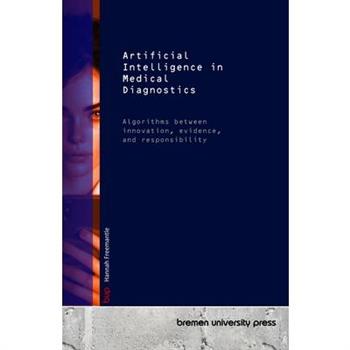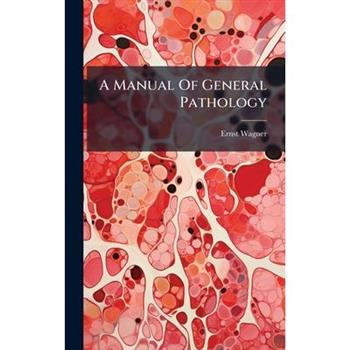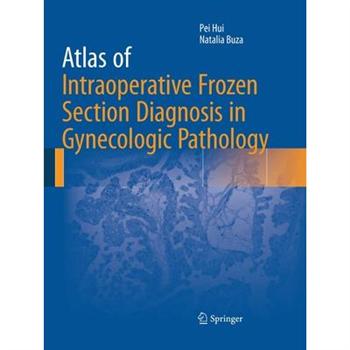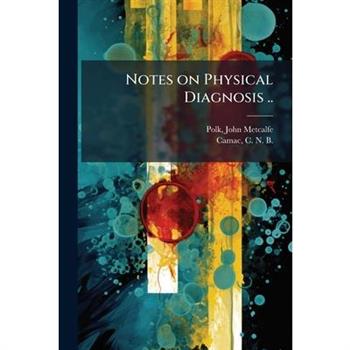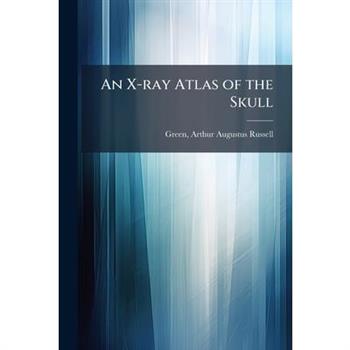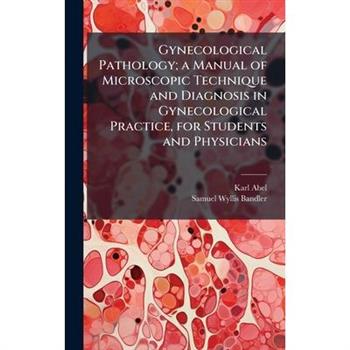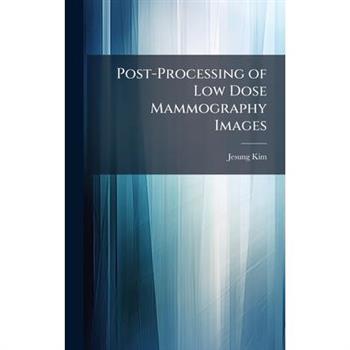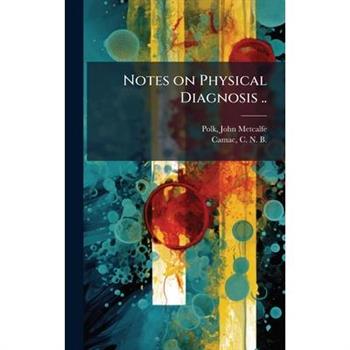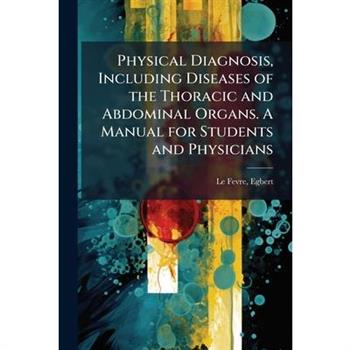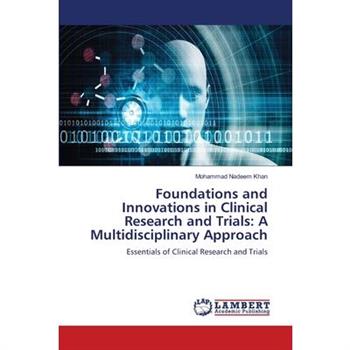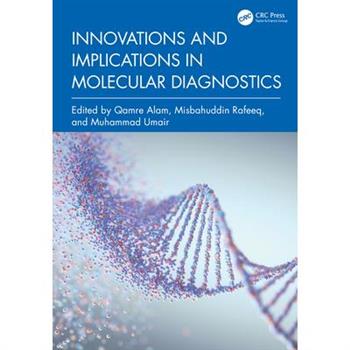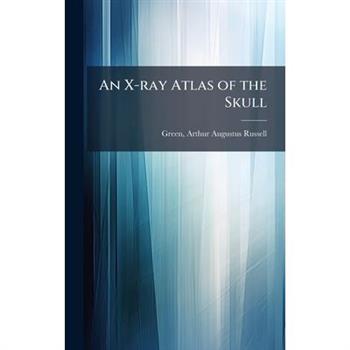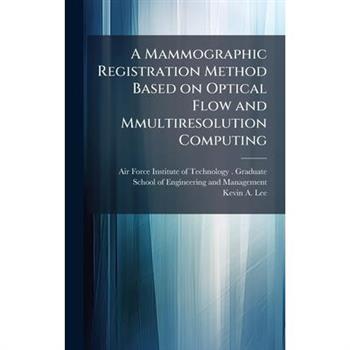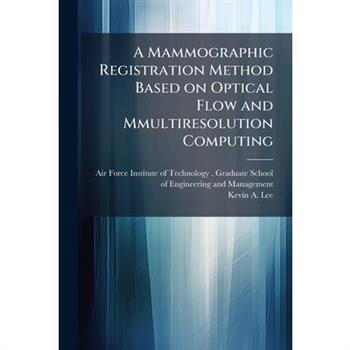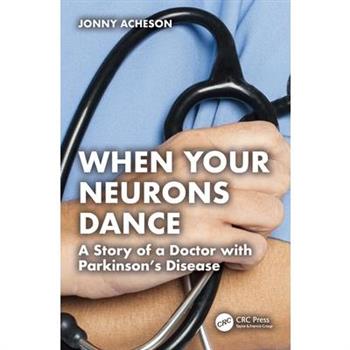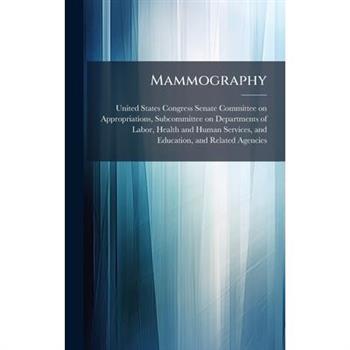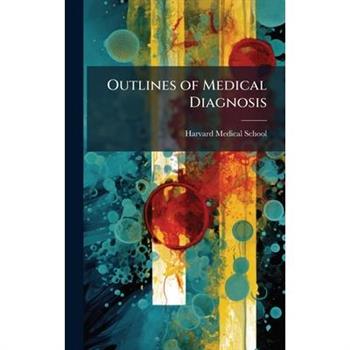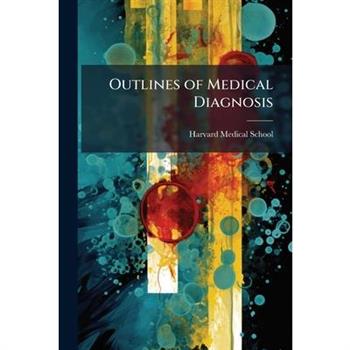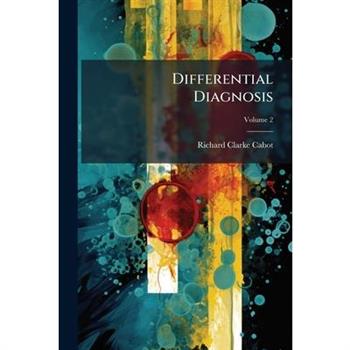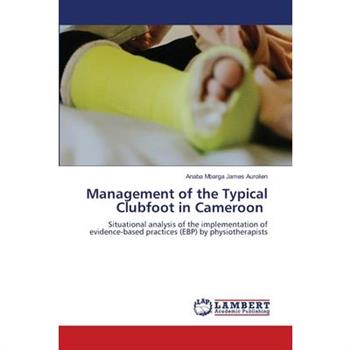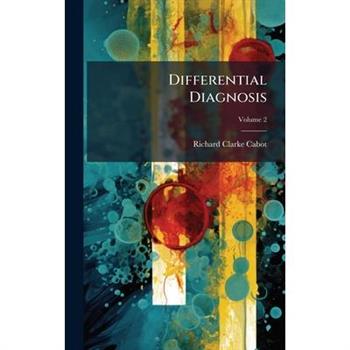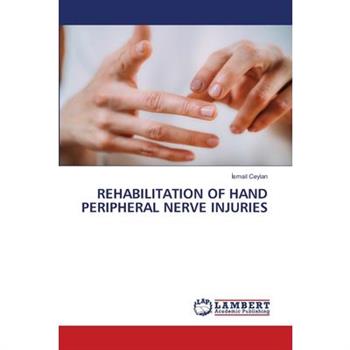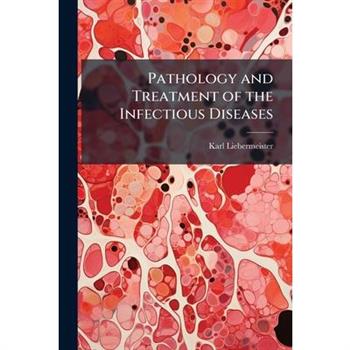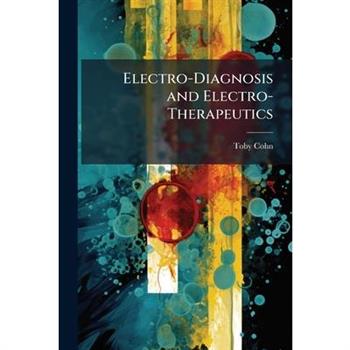Looking Within
"Compelling and insightful-I urge everyone, physicians and the public alike, to read this brilliant work." -James Borgstede MD, past president and chairman of the board of the American College of RadiologyA doctor's profound tales of diagnoses and discoveries made by medical imaging; and reflections on what we can learn about ourselves and life by looking within the human body.What would it really be like to have x-ray vision? Our bodies have endless stories and secrets to tell, and imaging is the great equalizer. When we look deep into ourselves from the vantage of this fundamental level, with exterior barriers and labels removed, we may see ourselves, other people, and our lives in a whole new light.In Looking Within, Cullen Ruff, MD collects over 30 stories of how diagnostic imaging impacted the lives of his patients and provided insight into the many complex stories that led these people to seek answers. Ruff highlights the wonder and mystery of the human body, literally and metaphorically looking inside of others. Each story describes a patient in whom a life-changing discovery is made: tumors, stroke, domestic violence, substance abuse, sterility, unexpected pregnancy, infection, surgical complications, evidence of criminal activity, mental illness, even impending death. Dr. Ruff's words, images, and insights help us see ourselves like never before.
Artificial Intelligence in Medical Diagnostics
Artificial intelligence is revolutionizing diagnostics: faster, more precise, and more connected than ever before. Whether in radiology, pathology, genetics, or telemedicine, AI systems often detect diseases in seconds and deliver analyses that used to take days. But where are the limits? Who bears responsibility? And what role will doctors play in this new era?This book offers a clear, fact-filled, and understandable overview of the technological foundations, current areas of application, and ethical questions surrounding AI diagnostics. A must-read for anyone who wants to understand how the medicine of tomorrow is being created-and how we can shape it.Bremen University Press has published over 5,000 specialist books in various languages since 2005.1st edition 2025
Common Sense Labs
Updated and Expanded Edition of the Bestselling Book Common Sense Labs! Features the latest medical research and insights, offering a more comprehensive explanation of blood tests. Blood tests are one of the most effective and accessible tools for monitoring your health, but in today's fast-paced healthcare system, patients often leave the doctor's office with little understanding of which tests to request, why they're important, or how to interpret the results. Doctors, often pressed for time, may not fully explain the details, leaving many feeling confused and unsure. In response to this widespread issue, Dr. Ken Berry, a trusted family physician, and Kim Howerton, a certified health coach, have teamed up again to create the updated and expanded edition of their bestselling book Common Sense Labs. Maintaining the clear and accessible format of the original, this edition goes even further to help readers demystify blood work, understand what tests to get, interpret results, and take steps toward better health. In this comprehensive guide, you will discover: Which important lab tests go beyond standard physicians' orders to help you better assess your healthHow to interpret your results beyond the average rangesHow to take control of your health and make informed decisions with confidenceHow blood work can diagnose and help you manage common health conditionsPractical strategies for improving your health based on your lab resultsExpanded and Updated Features: New and Updated Content: This second edition incorporates the latest medical research and insights, offering readers a more comprehensive understanding of a broader range of key blood tests.Clear, Accessible Explanations: Dr. Berry and Howerton break down complex medical concepts into simple, understandable language, empowering you to confidently interpret your own blood work.Trending Health Topics: New sections cover emerging health concerns like inflammation markers, metabolic health, hormone balance, and advanced cholesterol testing, reflecting current trends in preventive care.Tools and Advice: Charts, checklists, and graphs to help readers understand optimal levels for health markers and actively participate in their health journey and track their lab results.With expert insights and practical advice, Common Sense Labs empowers you to take control of your health by understanding your blood work and making meaningful changes for a healthier future. Whether you are aiming to optimize your health, better understand your current lab results, or take proactive steps toward wellness, Common Sense Labs is the essential guide to navigating your blood work with clarity and confidence.
Medical Diagnosis; Special Diagnosis of Internal Medicine
"Medical Diagnosis; Special Diagnosis of Internal Medicine: A Handbook for Physicians and Students" offers a detailed guide to the diagnostic practices of the early 20th century. Authored by Wilhelm von Leube and translated and adapted by Julius L. Salinger, this book provides a comprehensive overview of the methods and techniques used to diagnose internal diseases. Designed for both practicing physicians and medical students, the handbook covers a wide range of topics, including the examination of patients, the interpretation of symptoms, and the differentiation of various diseases. It reflects the state of medical knowledge at the time and provides valuable insights into the historical development of diagnostic medicine. This edition remains a significant resource for those interested in the history of medicine and the evolution of diagnostic techniques.This work has been selected by scholars as being culturally important, and is part of the knowledge base of civilization as we know it. This work was reproduced from the original artifact, and remains as true to the original work as possible. Therefore, you will see the original copyright references, library stamps (as most of these works have been housed in our most important libraries around the world), and other notations in the work.This work is in the public domain in the United States of America, and possibly other nations. Within the United States, you may freely copy and distribute this work, as no entity (individual or corporate) has a copyright on the body of the work.As a reproduction of a historical artifact, this work may contain missing or blurred pages, poor pictures, errant marks, etc. Scholars believe, and we concur, that this work is important enough to be preserved, reproduced, and made generally available to the public. We appreciate your support of the preservation process, and thank you for being an important part of keeping this knowledge alive and relevant.
Hematopathology
Part of the popular Foundations in Diagnostic Pathology Series, Hematopathology, Fourth Edition, is a practical and affordable resource that is ideal for study and review as well as everyday clinical practice. With its highly templated format, clearly written text, and concise summary tables, this user-friendly reference helps both trainees and practicing pathologists form accurate diagnoses, avoid pitfalls, and confidently sign out pathology reports on these often difficult and challenging cases.Uses a highly templated format that includes clinical, imaging, and management/prognostic features; pathologic features; ancillary studies; differential diagnosis; and selected bibliographyFocuses on the specific features of various entities, including differential diagnosesSupplements traditional morphologic diagnostic pathology with clinical, immunohistochemical, and molecular genetic information throughoutIncludes new information on the molecular biology of benign and malignant hematologic disordersContains numerous quick-reference summary boxes that provide concise and handy key points on the clinical features and pathological features of each disease within hematopathologyFeatures hundreds of full-color photomicrographs and gross photographs that depict important pathologic features, enabling you to form a differential diagnosis and compare your findings with actual casesReflects updated disease classifications according to the 5th edition of World Health Organization (WHO) and The International Consensus Classification (ICC)Offers contributions from internationally recognized pathologists, keeping you up to date with the latest information in the fieldAn eBook version is included with purchase. The eBook allows you to access all of the text, figures and references, with the ability to search, customize your content, make notes and highlights, and have content read aloud. Additional digital ancillary content may publish up to 6 weeks following the publication date
A Manual Of General Pathology
A Manual Of General Pathology by Ernst Wagner is a comprehensive guide designed for students and practitioners of medicine. This book delves into the fundamental principles of pathology, offering detailed insights into disease processes and their manifestations. Covering a wide range of topics within general pathology, it serves as an invaluable resource for understanding the mechanisms of disease and their impact on the human body.Intended as both a textbook for students and a reference manual for practicing physicians, 'A Manual Of General Pathology' provides a structured approach to learning and reviewing essential concepts. Its clear and concise explanations make it an accessible and practical tool for anyone seeking a deeper understanding of pathology. This enduring work remains relevant for its foundational knowledge and meticulous attention to detail.This work has been selected by scholars as being culturally important, and is part of the knowledge base of civilization as we know it. This work was reproduced from the original artifact, and remains as true to the original work as possible. Therefore, you will see the original copyright references, library stamps (as most of these works have been housed in our most important libraries around the world), and other notations in the work.This work is in the public domain in the United States of America, and possibly other nations. Within the United States, you may freely copy and distribute this work, as no entity (individual or corporate) has a copyright on the body of the work.As a reproduction of a historical artifact, this work may contain missing or blurred pages, poor pictures, errant marks, etc. Scholars believe, and we concur, that this work is important enough to be preserved, reproduced, and made generally available to the public. We appreciate your support of the preservation process, and thank you for being an important part of keeping this knowledge alive and relevant.
Atlas of Intraoperative Frozen Section Diagnosis in Gynecologic Pathology
This atlas is dedicated specifically to gynecologic frozen section diagnosis and addresses professional practice gaps such as high diagnostic error rate, slow turnaround time, and inefficient communication between surgeons and pathologists at the time of intraoperative frozen section consultation of gynecologic specimens. The format of the volume is a combination of concise text and high quality gross and frozen section microscopic images, meticulously selected from the superb collection of pathology specimens of gynecologic tumors provided at Yale-New Haven Hospital in the past decades. Frequent entities with diagnostic pitfalls are balanced with less common lesions. Strategies to recognize their diagnostic features are emphasized, in addition to the impact on optimal surgical treatment of patients with gynecologic cancer. The indications, limitations, morphologic diagnostic criteria and pitfalls of frozen section consultation in gynecologic pathology are thoroughly reviewed with an ultimate goal of avoiding patient mismanagement in real-time. High quality frozen section microscopic illustrations aid the recognition of morphologic patterns and serve as quick reference during intraoperative consultation. Written by experts in the field, Atlas of Intraoperative Frozen Section Diagnosis in Gynecologic Pathology is a valuable resource for pathologists at all career/expertise levels who are involved in intraoperative consultation in their daily clinical practice.
Environmentally Safe Strategies for Plant Protection Against Biotic and Abiotic Stresses
Environmentally Safe Strategies for Plant Protection Against Biotic and Abiotic Stresses presents environmentally friendly and safe methods for plant protection against not only biotic stresses caused by various pathogens and pests, but also against abiotic stresses such as salinity, drought, UV radiations, flood, unfavorable temperature, and pH, etc. The book aims to present approaches for both abiotic and biotic stresses, providing a valuable, integrated view to inspire new research as well as to implement and develop new practices. As global demand for organic food and feed products increases, it is necessary to focus on research areas related to discovery, application and demonstrating the modes of action of natural compounds obtained from various plants or mushrooms, as well as beneficial microbes and their metabolites involved in plant protection against biotic and abiotic stresses. These natural compounds, biocontrol agents and their volatile or non-volatile metabolites, which might have direct antagonism against phytopathogens and pests or indirect effect via induction of plant defense, could be formulated and used with high durability to control various environmental stresses in an eco-friendly manner.
Notes on Physical Diagnosis ..
"Notes on Physical Diagnosis" is a comprehensive guide to the methods and techniques of physical examination, intended for medical students and practitioners. Originally published in 1905, this volume reflects the state of medical knowledge and diagnostic practices at the beginning of the 20th century. Authored by John Metcalfe Polk and edited by C. N. B. Camac, the book offers detailed instructions on how to observe, palpate, percuss, and auscultate patients to accurately diagnose various conditions. This historical text provides valuable insights into the evolution of medical diagnosis and the development of clinical skills. It serves as a fascinating resource for those interested in medical history and the foundations of modern medical practice.This work has been selected by scholars as being culturally important, and is part of the knowledge base of civilization as we know it. This work was reproduced from the original artifact, and remains as true to the original work as possible. Therefore, you will see the original copyright references, library stamps (as most of these works have been housed in our most important libraries around the world), and other notations in the work.This work is in the public domain in the United States of America, and possibly other nations. Within the United States, you may freely copy and distribute this work, as no entity (individual or corporate) has a copyright on the body of the work.As a reproduction of a historical artifact, this work may contain missing or blurred pages, poor pictures, errant marks, etc. Scholars believe, and we concur, that this work is important enough to be preserved, reproduced, and made generally available to the public. We appreciate your support of the preservation process, and thank you for being an important part of keeping this knowledge alive and relevant.
Post-Processing of Low Dose Mammography Images
In mammography, X-ray radiation is used in sufficient doses to be captured on film for cancer diagnosis. A problem lies in the inherent nature of X-rays to cause cancer. The resolution of the images obtained on film is directly related to the radiation dosage. Thus, a trade off between image quality and radiation exposure is necessary to ensure proper diagnosis without causing cancer. A possible solution is to decrease the dosage of radiation and improve the image quality of mammograms using postprocessing methods applied to digitized film images. Image processing techniques that may improve the resolution of images captured at lower doses include crispening, denoising, histogram equalization, and pattern recognition methods.This work has been selected by scholars as being culturally important, and is part of the knowledge base of civilization as we know it. This work was reproduced from the original artifact, and remains as true to the original work as possible. Therefore, you will see the original copyright references, library stamps (as most of these works have been housed in our most important libraries around the world), and other notations in the work.This work is in the public domain in the United States of America, and possibly other nations. Within the United States, you may freely copy and distribute this work, as no entity (individual or corporate) has a copyright on the body of the work.As a reproduction of a historical artifact, this work may contain missing or blurred pages, poor pictures, errant marks, etc. Scholars believe, and we concur, that this work is important enough to be preserved, reproduced, and made generally available to the public. We appreciate your support of the preservation process, and thank you for being an important part of keeping this knowledge alive and relevant.
An X-ray Atlas of the Skull
"An X-ray Atlas of the Skull" by Arthur Augustus Russell Green, originally published in 1918, is a comprehensive guide to the radiographic anatomy of the human skull. This meticulously detailed atlas provides a systematic exploration of skull structures through X-ray imaging, offering invaluable insights for medical professionals and students of radiology and anatomy. Featuring a collection of high-quality X-ray plates accompanied by explanatory text, the atlas guides the reader through various anatomical landmarks and features of the skull. It serves as an essential resource for understanding normal and pathological conditions detectable via radiography.This historical text remains relevant for its foundational contribution to the field of medical imaging and its detailed depiction of early radiographic techniques. Its enduring value lies in its ability to provide a clear and systematic understanding of skull anatomy as visualized through X-ray technology.This work has been selected by scholars as being culturally important, and is part of the knowledge base of civilization as we know it. This work was reproduced from the original artifact, and remains as true to the original work as possible. Therefore, you will see the original copyright references, library stamps (as most of these works have been housed in our most important libraries around the world), and other notations in the work.This work is in the public domain in the United States of America, and possibly other nations. Within the United States, you may freely copy and distribute this work, as no entity (individual or corporate) has a copyright on the body of the work.As a reproduction of a historical artifact, this work may contain missing or blurred pages, poor pictures, errant marks, etc. Scholars believe, and we concur, that this work is important enough to be preserved, reproduced, and made generally available to the public. We appreciate your support of the preservation process, and thank you for being an important part of keeping this knowledge alive and relevant.
Gynecological Pathology; a Manual of Microscopic Technique and Diagnosis in Gynecological Practice, for Students and Physicians
"Gynecological Pathology" is a comprehensive manual of microscopic technique and diagnosis, intended for students and physicians engaged in gynecological practice. Originally published in 1901, this work offers insights into the state of gynecological pathology at the turn of the 20th century. It provides detailed instructions on microscopic examination and diagnostic procedures relevant to gynecological conditions. The book serves as a valuable resource for understanding the historical development of diagnostic methods in gynecology and the evolution of medical knowledge in this specialized field. While medical practices have advanced significantly since its original publication, "Gynecological Pathology" remains a significant historical document, offering a glimpse into the diagnostic approaches used in early gynecological medicine.This work has been selected by scholars as being culturally important, and is part of the knowledge base of civilization as we know it. This work was reproduced from the original artifact, and remains as true to the original work as possible. Therefore, you will see the original copyright references, library stamps (as most of these works have been housed in our most important libraries around the world), and other notations in the work.This work is in the public domain in the United States of America, and possibly other nations. Within the United States, you may freely copy and distribute this work, as no entity (individual or corporate) has a copyright on the body of the work.As a reproduction of a historical artifact, this work may contain missing or blurred pages, poor pictures, errant marks, etc. Scholars believe, and we concur, that this work is important enough to be preserved, reproduced, and made generally available to the public. We appreciate your support of the preservation process, and thank you for being an important part of keeping this knowledge alive and relevant.
Gynecological Pathology; a Manual of Microscopic Technique and Diagnosis in Gynecological Practice, for Students and Physicians
"Gynecological Pathology" is a comprehensive manual of microscopic technique and diagnosis, intended for students and physicians engaged in gynecological practice. Originally published in 1901, this work offers insights into the state of gynecological pathology at the turn of the 20th century. It provides detailed instructions on microscopic examination and diagnostic procedures relevant to gynecological conditions. The book serves as a valuable resource for understanding the historical development of diagnostic methods in gynecology and the evolution of medical knowledge in this specialized field. While medical practices have advanced significantly since its original publication, "Gynecological Pathology" remains a significant historical document, offering a glimpse into the diagnostic approaches used in early gynecological medicine.This work has been selected by scholars as being culturally important, and is part of the knowledge base of civilization as we know it. This work was reproduced from the original artifact, and remains as true to the original work as possible. Therefore, you will see the original copyright references, library stamps (as most of these works have been housed in our most important libraries around the world), and other notations in the work.This work is in the public domain in the United States of America, and possibly other nations. Within the United States, you may freely copy and distribute this work, as no entity (individual or corporate) has a copyright on the body of the work.As a reproduction of a historical artifact, this work may contain missing or blurred pages, poor pictures, errant marks, etc. Scholars believe, and we concur, that this work is important enough to be preserved, reproduced, and made generally available to the public. We appreciate your support of the preservation process, and thank you for being an important part of keeping this knowledge alive and relevant.
Post-Processing of Low Dose Mammography Images
In mammography, X-ray radiation is used in sufficient doses to be captured on film for cancer diagnosis. A problem lies in the inherent nature of X-rays to cause cancer. The resolution of the images obtained on film is directly related to the radiation dosage. Thus, a trade off between image quality and radiation exposure is necessary to ensure proper diagnosis without causing cancer. A possible solution is to decrease the dosage of radiation and improve the image quality of mammograms using postprocessing methods applied to digitized film images. Image processing techniques that may improve the resolution of images captured at lower doses include crispening, denoising, histogram equalization, and pattern recognition methods.This work has been selected by scholars as being culturally important, and is part of the knowledge base of civilization as we know it. This work was reproduced from the original artifact, and remains as true to the original work as possible. Therefore, you will see the original copyright references, library stamps (as most of these works have been housed in our most important libraries around the world), and other notations in the work.This work is in the public domain in the United States of America, and possibly other nations. Within the United States, you may freely copy and distribute this work, as no entity (individual or corporate) has a copyright on the body of the work.As a reproduction of a historical artifact, this work may contain missing or blurred pages, poor pictures, errant marks, etc. Scholars believe, and we concur, that this work is important enough to be preserved, reproduced, and made generally available to the public. We appreciate your support of the preservation process, and thank you for being an important part of keeping this knowledge alive and relevant.
Notes on Physical Diagnosis ..
"Notes on Physical Diagnosis" is a comprehensive guide to the methods and techniques of physical examination, intended for medical students and practitioners. Originally published in 1905, this volume reflects the state of medical knowledge and diagnostic practices at the beginning of the 20th century. Authored by John Metcalfe Polk and edited by C. N. B. Camac, the book offers detailed instructions on how to observe, palpate, percuss, and auscultate patients to accurately diagnose various conditions. This historical text provides valuable insights into the evolution of medical diagnosis and the development of clinical skills. It serves as a fascinating resource for those interested in medical history and the foundations of modern medical practice.This work has been selected by scholars as being culturally important, and is part of the knowledge base of civilization as we know it. This work was reproduced from the original artifact, and remains as true to the original work as possible. Therefore, you will see the original copyright references, library stamps (as most of these works have been housed in our most important libraries around the world), and other notations in the work.This work is in the public domain in the United States of America, and possibly other nations. Within the United States, you may freely copy and distribute this work, as no entity (individual or corporate) has a copyright on the body of the work.As a reproduction of a historical artifact, this work may contain missing or blurred pages, poor pictures, errant marks, etc. Scholars believe, and we concur, that this work is important enough to be preserved, reproduced, and made generally available to the public. We appreciate your support of the preservation process, and thank you for being an important part of keeping this knowledge alive and relevant.
Advances In Cancer Research
Cancer represents one of the most complex and challenging health burdens of our time, affecting millions of individuals globally and spanning virtually every tissue and organ system in the human body. At its core, cancer is fundamentally a disease of cellular dysregulation where normal checks and balances on cell growth, division, and death become compromised, leading to uncontrolled proliferation and, in many cases, metastatic spread. This chapter explores the foundational principles underlying cancer biology, setting the stage for understanding current therapeutic approaches and future innovations in cancer treatment and prevention.
Neuroimaging - From Research to Clinical Practice
Neuroimaging has transitioned from the laboratory to the clinic at an unprecedented pace, becoming a standard diagnostic, monitoring, and treatment tool for neurological and psychiatric diseases. In this book, a clear description of this revolution is provided, emphasizing how novel imaging techniques are reshaping contemporary medicine. Organized into three sections, the book opens with the examination of brain development, describing how state-of-the-art diffusion MRI reveals the dynamic architecture of the developing brain. The opening chapter emphasizes the promise of early imaging in identifying neurodevelopmental disorders. The second section is dedicated to clinical applications. Chapters cover the correspondence between neuroimaging features and disease, the use of nuclear medicine methodology in dementia, epilepsy, and movement disorders, and the diagnostic value of PET/CT, illustrated by case-based examples. These chapters offer practical insights into enhanced diagnostic accuracy and therapeutic support through multimodal imaging. The third section of the book acquaints readers with interventional and surgical applications. This section illustrates how imaging today is directly applied in therapy, from treatment under imaging guidance to neuronavigation and neuromodulation interventions. Trends for the future, such as the incorporation of AI, portable imaging, and augmented reality into the operating room, are also discussed. Authored by international experts, this book is intended for clinicians, researchers, and students interested in the clinical applications of neuroimaging. It links current research with everyday medical practice using case-based examples and practical frameworks. Neuroimaging - From Research to Clinical Practice is a reference and a guide to how brain imaging shapes modern treatment approaches.
Illustrations Of Pulmonary Consumption
"Illustrations Of Pulmonary Consumption" by Samuel George Morton offers a detailed exploration of pulmonary consumption, more commonly known today as tuberculosis. This historical work delves into the anatomical characteristics, causes, symptoms, and treatment of the disease. Accompanied by twelve meticulously drawn and colored plates from nature, the book provides a visual and comprehensive understanding of the condition as it was understood in the 19th century. Morton's detailed observations and artistic renderings make this book a valuable resource for those interested in the history of medicine, the evolution of our understanding of pulmonary diseases, and the anatomical study of tuberculosis. It stands as a significant contribution to the medical literature of its time, offering insights into both the science and the art of medical illustration.This work has been selected by scholars as being culturally important, and is part of the knowledge base of civilization as we know it. This work was reproduced from the original artifact, and remains as true to the original work as possible. Therefore, you will see the original copyright references, library stamps (as most of these works have been housed in our most important libraries around the world), and other notations in the work.This work is in the public domain in the United States of America, and possibly other nations. Within the United States, you may freely copy and distribute this work, as no entity (individual or corporate) has a copyright on the body of the work.As a reproduction of a historical artifact, this work may contain missing or blurred pages, poor pictures, errant marks, etc. Scholars believe, and we concur, that this work is important enough to be preserved, reproduced, and made generally available to the public. We appreciate your support of the preservation process, and thank you for being an important part of keeping this knowledge alive and relevant.
Illustrations Of Pulmonary Consumption
"Illustrations Of Pulmonary Consumption" by Samuel George Morton offers a detailed exploration of pulmonary consumption, more commonly known today as tuberculosis. This historical work delves into the anatomical characteristics, causes, symptoms, and treatment of the disease. Accompanied by twelve meticulously drawn and colored plates from nature, the book provides a visual and comprehensive understanding of the condition as it was understood in the 19th century. Morton's detailed observations and artistic renderings make this book a valuable resource for those interested in the history of medicine, the evolution of our understanding of pulmonary diseases, and the anatomical study of tuberculosis. It stands as a significant contribution to the medical literature of its time, offering insights into both the science and the art of medical illustration.This work has been selected by scholars as being culturally important, and is part of the knowledge base of civilization as we know it. This work was reproduced from the original artifact, and remains as true to the original work as possible. Therefore, you will see the original copyright references, library stamps (as most of these works have been housed in our most important libraries around the world), and other notations in the work.This work is in the public domain in the United States of America, and possibly other nations. Within the United States, you may freely copy and distribute this work, as no entity (individual or corporate) has a copyright on the body of the work.As a reproduction of a historical artifact, this work may contain missing or blurred pages, poor pictures, errant marks, etc. Scholars believe, and we concur, that this work is important enough to be preserved, reproduced, and made generally available to the public. We appreciate your support of the preservation process, and thank you for being an important part of keeping this knowledge alive and relevant.
Physical Diagnosis, Including Diseases of the Thoracic and Abdominal Organs. A Manual for Students and Physicians
Physical Diagnosis, Including Diseases of the Thoracic and Abdominal Organs, by Egbert Le Fevre, is a comprehensive manual for medical students and physicians dating back to 1902. This meticulously detailed text offers an in-depth exploration of the techniques and methodologies used in physical diagnosis at the turn of the century. Le Fevre's work provides detailed insights into the examination of the thoracic and abdominal regions, covering a range of diseases and conditions prevalent during that era. This manual serves not only as a historical record of medical practices but also as a valuable resource for understanding the evolution of diagnostic techniques. Its enduring appeal lies in its thoroughness and the foundational knowledge it imparts, making it a significant contribution to the field of medicine.This work has been selected by scholars as being culturally important, and is part of the knowledge base of civilization as we know it. This work was reproduced from the original artifact, and remains as true to the original work as possible. Therefore, you will see the original copyright references, library stamps (as most of these works have been housed in our most important libraries around the world), and other notations in the work.This work is in the public domain in the United States of America, and possibly other nations. Within the United States, you may freely copy and distribute this work, as no entity (individual or corporate) has a copyright on the body of the work.As a reproduction of a historical artifact, this work may contain missing or blurred pages, poor pictures, errant marks, etc. Scholars believe, and we concur, that this work is important enough to be preserved, reproduced, and made generally available to the public. We appreciate your support of the preservation process, and thank you for being an important part of keeping this knowledge alive and relevant.
Elements of Pathological Anatomy Volume
"Elements of Pathological Anatomy, Volume 2" by Samuel D. Gross, originally published in 1843, offers a detailed exploration of the field of pathology during the 19th century. This volume provides comprehensive insights into anatomical pathology, reflecting the state of medical knowledge and practice of the time. Gross's work serves as a valuable historical document, shedding light on the diagnostic methods and understanding of disease prevalent in the early to mid-1800s. This book is essential reading for historians of medicine, students of pathology, and anyone interested in the evolution of medical science. It offers a unique glimpse into the foundations of modern pathology and the contributions of early medical pioneers like Samuel D. Gross.This work has been selected by scholars as being culturally important, and is part of the knowledge base of civilization as we know it. This work was reproduced from the original artifact, and remains as true to the original work as possible. Therefore, you will see the original copyright references, library stamps (as most of these works have been housed in our most important libraries around the world), and other notations in the work.This work is in the public domain in the United States of America, and possibly other nations. Within the United States, you may freely copy and distribute this work, as no entity (individual or corporate) has a copyright on the body of the work.As a reproduction of a historical artifact, this work may contain missing or blurred pages, poor pictures, errant marks, etc. Scholars believe, and we concur, that this work is important enough to be preserved, reproduced, and made generally available to the public. We appreciate your support of the preservation process, and thank you for being an important part of keeping this knowledge alive and relevant.
Foundations and Innovations in Clinical Research and Trials
The book Essentials of Clinical Research and Trials offers a concise yet comprehensive guide to the multifaceted field of clinical research. It emphasizes the importance of multidisciplinary collaboration, adherence to ethical and regulatory standards, and the integration of advanced technologies to streamline processes and improve outcomes.Designed for both beginners and seasoned professionals, the book provides practical insights into trial design, execution, and analysis, with a strong focus on global accreditation standards, including NABH, WHO, and ICH-GCP.By incorporating perspectives from diverse departments-such as pharmacology, radiology, ethics committees, and data management-the book highlights the collaborative nature of clinical trials. This comprehensive approach ensures that readers gain a holistic understanding of the field, enabling them to address contemporary challenges and contribute meaningfully to medical advancements.
Diagnostic Imaging: Gastrointestinal
Covering the entire spectrum of this fast-changing field, Diagnostic Imaging: Gastrointestinal, Fifth Edition, is an invaluable resource for gastrointestinal radiologists, general radiologists, and trainees?anyone who requires an easily accessible, highly visual reference on today's GI imaging. Drs. Atif Zaheer, Siva P. Raman, and their team of highly regarded experts provide updated information on recent advances in technology and the understanding of GI diseases and disorders to help you make informed decisions at the point of care. The text is lavishly illustrated, delineated, and referenced, making it a useful learning tool as well as a handy reference for daily practice.Serves as a one-stop resource for key concepts and information on GI imaging, including a wealth of new material and content updates throughoutCovers all aspects of GI imaging, including pathophysiology, imaging findings, and disease management options, such as the radiologist's role in evaluating patients for bariatric surgery, antireflux procedures, esophageal and bowel resections, and moreFeatures 3,300 high-quality print images (with an additional 2,100 images in the complimentary eBook), including radiology images, detailed medical illustrations, clinical photographs, and histology and gross pathology imagesFeatures updates from cover to cover, including new information on rectal MR, pelvic floor MR, and MR elastography; updated CT protocols; updated differential diagnoses; new cases and images; and new staging details and diagramsContains a variety of new chapters, including Approach to Incidental Lymph Nodes on CT/MR: Summary of 2013 ACR Consensus Statement; Approach to Management of Incidental Splenic Lesions: Summary of 2013 ACR Consensus; Management of Incidental Gallbladder and Biliary Findings: Summary of Consensus Statements; Management of Incidental Liver Lesions; Management of Pancreatic Cysts (with new guidelines); Summary of C-RADS for CT Colonography; and Summary of CT/MR LI-RADS 2018Uses bulleted, succinct text and highly templated chapters for quick comprehension of essential information at the point of careIncludes an eBook that allows you access to everything in the print version as well as additional images, text, and references, with the ability to search, customize your content, make notes and highlights, and have content read aloud
Innovations and Implications in Molecular Diagnostics
This book introduces the field of molecular diagnostics, tracing its evolution from the earliest days of genetic research to cutting-edge advancements. It begins with a historical overview, setting the stage for an understanding of the foundational principles and techniques that underpin current practices in DNA analysis. It also provides the intricate details of various molecular techniques, such as advanced polymerase chain reaction (PCR) methods and next-generation sequencing, and their impact in the field of genetics and diagnostics. The book also explores the significant role of bioinformatics as the backbone of modern diagnostics and examines the changes brought about by high-throughput technologies and nanotechnology in molecular research and diagnostics. The importance of molecular imaging techniques in visualizing biological processes is discussed, along with the advancements in RNA analysis and their diagnostic implications. The book addresses the emerging fields of metabolomics and proteomics in molecular diagnostics and the transformative impact of artificial intelligence in this field. The book concludes with a thoughtful discussion on the ethical and regulatory considerations in molecular diagnostics. This book is intended for researchers and students of the fields of molecular diagnostics, biotechnology, and genomics.Key Features: Provides historical overview and recent advancements in the field of molecular diagnostics Explores foundational principles and advanced techniques in DNA analysis, including detailed insights into PCR methods Covers the applications and impact of next-generation sequencing in genetics and diagnostics Discusses the revolutionary influence of high-throughput technologies and nanotechnology in molecular research and diagnostics Examines the roles of metabolomics, proteomics, and artificial intelligence in molecular diagnostics
An X-ray Atlas of the Skull
"An X-ray Atlas of the Skull" by Arthur Augustus Russell Green, originally published in 1918, is a comprehensive guide to the radiographic anatomy of the human skull. This meticulously detailed atlas provides a systematic exploration of skull structures through X-ray imaging, offering invaluable insights for medical professionals and students of radiology and anatomy. Featuring a collection of high-quality X-ray plates accompanied by explanatory text, the atlas guides the reader through various anatomical landmarks and features of the skull. It serves as an essential resource for understanding normal and pathological conditions detectable via radiography.This historical text remains relevant for its foundational contribution to the field of medical imaging and its detailed depiction of early radiographic techniques. Its enduring value lies in its ability to provide a clear and systematic understanding of skull anatomy as visualized through X-ray technology.This work has been selected by scholars as being culturally important, and is part of the knowledge base of civilization as we know it. This work was reproduced from the original artifact, and remains as true to the original work as possible. Therefore, you will see the original copyright references, library stamps (as most of these works have been housed in our most important libraries around the world), and other notations in the work.This work is in the public domain in the United States of America, and possibly other nations. Within the United States, you may freely copy and distribute this work, as no entity (individual or corporate) has a copyright on the body of the work.As a reproduction of a historical artifact, this work may contain missing or blurred pages, poor pictures, errant marks, etc. Scholars believe, and we concur, that this work is important enough to be preserved, reproduced, and made generally available to the public. We appreciate your support of the preservation process, and thank you for being an important part of keeping this knowledge alive and relevant.
A Mammographic Registration Method Based on Optical Flow and Mmultiresolution Computing
Breast cancer is second only to lung cancer as the most prevalent form of cancer to afflict women remaining the leading cause of cancer death in women between the ages of 40 and 55. Mammography is a potent weapon in the fight against this lethal disease, due in large part to its widespread availability and low cost. Despite the fact that mammography can detect small lesions as early as two years before they become palpable on physical exam, between 10 and 30 percent of cancerous lesions go undetected during evaluation by the radiologist. One approach to improving detection rates involves comparing mammograms of the same breast from successive years. Since most forms of breast cancer develop slowly, multiple-view techniques might be able to detect subtle changes indicative of cancerous growth. This thesis proposes a computer-aided system designed to bring two images into correspondence, or alignment, so that they can be compared and evaluated for possible abnormalities. The system estimates a mapping between two images by calculating the optical flow, or apparent intensity change, between a source and target mammogram. The efficiency of the proposed registration system is enhanced by utilizing a multire solution approach whereby images are compared at more than one scale. In contrast to other registration attempts which match sets of morphological features, this system does not require the identification of any control points at all. This advantage permits the system to perform well even when the two images differ significantly from one another. Preliminary results suggest the potential usefulness of this system as part of a clinical computer-aided detection (CADx) system.This work has been selected by scholars as being culturally important, and is part of the knowledge base of civilization as we know it. This work was reproduced from the original artifact, and remains as true to the original work as possible. Therefore, you will see the original copyright references, library stamps (as most of these works have been housed in our most important libraries around the world), and other notations in the work.This work is in the public domain in the United States of America, and possibly other nations. Within the United States, you may freely copy and distribute this work, as no entity (individual or corporate) has a copyright on the body of the work.As a reproduction of a historical artifact, this work may contain missing or blurred pages, poor pictures, errant marks, etc. Scholars believe, and we concur, that this work is important enough to be preserved, reproduced, and made generally available to the public. We appreciate your support of the preservation process, and thank you for being an important part of keeping this knowledge alive and relevant.
A Mammographic Registration Method Based on Optical Flow and Mmultiresolution Computing
Breast cancer is second only to lung cancer as the most prevalent form of cancer to afflict women remaining the leading cause of cancer death in women between the ages of 40 and 55. Mammography is a potent weapon in the fight against this lethal disease, due in large part to its widespread availability and low cost. Despite the fact that mammography can detect small lesions as early as two years before they become palpable on physical exam, between 10 and 30 percent of cancerous lesions go undetected during evaluation by the radiologist. One approach to improving detection rates involves comparing mammograms of the same breast from successive years. Since most forms of breast cancer develop slowly, multiple-view techniques might be able to detect subtle changes indicative of cancerous growth. This thesis proposes a computer-aided system designed to bring two images into correspondence, or alignment, so that they can be compared and evaluated for possible abnormalities. The system estimates a mapping between two images by calculating the optical flow, or apparent intensity change, between a source and target mammogram. The efficiency of the proposed registration system is enhanced by utilizing a multire solution approach whereby images are compared at more than one scale. In contrast to other registration attempts which match sets of morphological features, this system does not require the identification of any control points at all. This advantage permits the system to perform well even when the two images differ significantly from one another. Preliminary results suggest the potential usefulness of this system as part of a clinical computer-aided detection (CADx) system.This work has been selected by scholars as being culturally important, and is part of the knowledge base of civilization as we know it. This work was reproduced from the original artifact, and remains as true to the original work as possible. Therefore, you will see the original copyright references, library stamps (as most of these works have been housed in our most important libraries around the world), and other notations in the work.This work is in the public domain in the United States of America, and possibly other nations. Within the United States, you may freely copy and distribute this work, as no entity (individual or corporate) has a copyright on the body of the work.As a reproduction of a historical artifact, this work may contain missing or blurred pages, poor pictures, errant marks, etc. Scholars believe, and we concur, that this work is important enough to be preserved, reproduced, and made generally available to the public. We appreciate your support of the preservation process, and thank you for being an important part of keeping this knowledge alive and relevant.
Mayo Clinic Critical and Neurocritical Care Board Review
The Mayo Clinic Critical and Neurocritical Care Board Review 2nd edition offers the latest updates from The Neurocritical Care Board Examination, uniquely combining general intensive care with neurocritical care. This comprehensive volume, authored by experienced consultants in neurointensive and medical intensive care, is the first to integrate both fields into a single resource. Aligned with the key disorders outlined by the UCNS and the American Board of Medical Specialties, this book ensures thorough preparation for the examination. Each chapter delves into basic pathophysiology, major disorders, syndromes, and their management. Given the significant focus on neurology in critical illness and acute brain injury, this book is also an invaluable tool for those preparing for the Critical Care Medicine boards. Recommended for intensivists, neurointensivists, and fellows in these specialties, this book is an essential resource for mastering the complexities of neurocritical care.
Elastography - Current Insights and Applications
The book Elastography - Current Insights and Applications aims to consolidate specific information and updates about elastography in general and abdominal pathologies specifically. The concept of elastography has been most widely explored for assessing liver fibrosis. However, multiple other domains, including focal liver lesions, endoscopic ultrasound elastography, and pancreatic elastography, are less explored. The book covers key concepts of bioethical principles, techniques, and recent updates on such areas of elastography in abdominal pathologies. We hope this book helps to enlighten the readers about these aspects of elastography.
Palliative Medicine and Hospice Care for Physician Associates Specialty Review
Palliative Medicine and Hospice Care for Physician Associates Specialty Review is a comprehensive review and guide for PAs who wish to study and practice for the Certificate of Added Qualification (CAQ) in Palliative Medicine and Hospice Care. It features 215 questions with multiple-choice answers across 11 chapters that are organized into three sections: Essential Aspects of Serious Illness Patient Care, Managing Suffering and Distress, and Care Transitions, Including End-of-Life. The fourth and last section, "Practice Essentials," contains two unique chapters on Hospice Essentials and Communication Essentials. These two chapters reinforce the two most fundamental facts of the PA profession: that PAs are trained in the fundamental skills of compassionate and attentive listening, and that they are lifelong learners in clinical medicine. Both chapters address topics that are not part of the blueprint for the CAQ but are nonetheless essential to the professional practice of a PA who is employed by hospice or interacts with any part of hospice in the world of palliative medicine. Each item featured in the book contains a case study in the question stem, followed by a discussion of the multiple choices that addresses why one option is correct while the others are not. This rich clinical material can enhance the knowledge and understanding of not just PAs training for the CAQ, but any physician or allied health professional involved in palliative medicine and hospice.
When Your Neurons Dance
Dr. Jonny Acheson, an Emergency Medicine Consultant in one of the UK's busiest departments, loved his job. Diagnosed with Parkinson's in 2016, his once-thriving environment worsened his symptoms. When Your Neurons Dance explores his adaptation, support, and journey within medicine and beyond.
Mammography
The BiblioGov Project is an effort to expand awareness of the public documents and records of the U.S. Government via print publications. In broadening the public understanding of government and its work, an enlightened democracy can grow and prosper. Ranging from historic Congressional Bills to the most recent Budget of the United States Government, the BiblioGov Project spans a wealth of government information. These works are now made available through an environmentally friendly, print-on-demand basis, using only what is necessary to meet the required demands of an interested public. We invite you to learn of the records of the U.S. Government, heightening the knowledge and debate that can lead from such publications.This work has been selected by scholars as being culturally important, and is part of the knowledge base of civilization as we know it. This work was reproduced from the original artifact, and remains as true to the original work as possible. Therefore, you will see the original copyright references, library stamps (as most of these works have been housed in our most important libraries around the world), and other notations in the work.This work is in the public domain in the United States of America, and possibly other nations. Within the United States, you may freely copy and distribute this work, as no entity (individual or corporate) has a copyright on the body of the work.As a reproduction of a historical artifact, this work may contain missing or blurred pages, poor pictures, errant marks, etc. Scholars believe, and we concur, that this work is important enough to be preserved, reproduced, and made generally available to the public. We appreciate your support of the preservation process, and thank you for being an important part of keeping this knowledge alive and relevant.
Mammography
The BiblioGov Project is an effort to expand awareness of the public documents and records of the U.S. Government via print publications. In broadening the public understanding of government and its work, an enlightened democracy can grow and prosper. Ranging from historic Congressional Bills to the most recent Budget of the United States Government, the BiblioGov Project spans a wealth of government information. These works are now made available through an environmentally friendly, print-on-demand basis, using only what is necessary to meet the required demands of an interested public. We invite you to learn of the records of the U.S. Government, heightening the knowledge and debate that can lead from such publications.This work has been selected by scholars as being culturally important, and is part of the knowledge base of civilization as we know it. This work was reproduced from the original artifact, and remains as true to the original work as possible. Therefore, you will see the original copyright references, library stamps (as most of these works have been housed in our most important libraries around the world), and other notations in the work.This work is in the public domain in the United States of America, and possibly other nations. Within the United States, you may freely copy and distribute this work, as no entity (individual or corporate) has a copyright on the body of the work.As a reproduction of a historical artifact, this work may contain missing or blurred pages, poor pictures, errant marks, etc. Scholars believe, and we concur, that this work is important enough to be preserved, reproduced, and made generally available to the public. We appreciate your support of the preservation process, and thank you for being an important part of keeping this knowledge alive and relevant.
When Your Neurons Dance
Dr. Jonny Acheson, an Emergency Medicine Consultant in one of the UK's busiest departments, loved his job. Diagnosed with Parkinson's in 2016, his once-thriving environment worsened his symptoms. When Your Neurons Dance explores his adaptation, support, and journey within medicine and beyond.
Immunohistochemistry and Ancillary Studies in Diagnostic Dermatopathology
Immunohistochemistry and ancillary studies play a crucial role in diagnostic pathology. Yet, few books cover their practicality in diagnostic dermatopathology. This book provides a practical guide to the application of rapid and cost-effective immunohistochemistry, as well as ancillary studies including immunofluorescence and molecular studies. With a focus on practicality and bridging knowledge gaps, the book covers helpful diagnostic stains and pertinent ancillary studies, organized by lines of differentiation. Each chapter includes a synopsis of antibodies, immunohistochemical panels, summary tables outlining staining patterns, and case studies. Now in its second edition, this book covers entities based on lineage, including epithelial, adnexal, melanocytic, lymphoid, and soft tissue, and discusses the role of molecular studies in the diagnosis of cutaneous neoplasms and soft tissue lesions. This comprehensive volume is an essential resource for pathologists, dermatopathologists, and residents in pathology and dermatology.
Outlines of Medical Diagnosis
"Outlines of Medical Diagnosis" offers a comprehensive overview of essential diagnostic techniques and principles. Prepared by the esteemed Harvard Medical School, this book provides a structured approach to understanding and applying diagnostic methods. Designed as a practical guide, it covers various diagnostic modalities and emphasizes the importance of accurate and thorough patient assessment. Students and practitioners alike will find this resource invaluable for honing their diagnostic skills and improving patient care. This book remains a relevant and useful tool for anyone in the medical field seeking to enhance their diagnostic acumen.This work has been selected by scholars as being culturally important, and is part of the knowledge base of civilization as we know it. This work was reproduced from the original artifact, and remains as true to the original work as possible. Therefore, you will see the original copyright references, library stamps (as most of these works have been housed in our most important libraries around the world), and other notations in the work.This work is in the public domain in the United States of America, and possibly other nations. Within the United States, you may freely copy and distribute this work, as no entity (individual or corporate) has a copyright on the body of the work.As a reproduction of a historical artifact, this work may contain missing or blurred pages, poor pictures, errant marks, etc. Scholars believe, and we concur, that this work is important enough to be preserved, reproduced, and made generally available to the public. We appreciate your support of the preservation process, and thank you for being an important part of keeping this knowledge alive and relevant.
Outlines of Medical Diagnosis
"Outlines of Medical Diagnosis" offers a comprehensive overview of essential diagnostic techniques and principles. Prepared by the esteemed Harvard Medical School, this book provides a structured approach to understanding and applying diagnostic methods. Designed as a practical guide, it covers various diagnostic modalities and emphasizes the importance of accurate and thorough patient assessment. Students and practitioners alike will find this resource invaluable for honing their diagnostic skills and improving patient care. This book remains a relevant and useful tool for anyone in the medical field seeking to enhance their diagnostic acumen.This work has been selected by scholars as being culturally important, and is part of the knowledge base of civilization as we know it. This work was reproduced from the original artifact, and remains as true to the original work as possible. Therefore, you will see the original copyright references, library stamps (as most of these works have been housed in our most important libraries around the world), and other notations in the work.This work is in the public domain in the United States of America, and possibly other nations. Within the United States, you may freely copy and distribute this work, as no entity (individual or corporate) has a copyright on the body of the work.As a reproduction of a historical artifact, this work may contain missing or blurred pages, poor pictures, errant marks, etc. Scholars believe, and we concur, that this work is important enough to be preserved, reproduced, and made generally available to the public. We appreciate your support of the preservation process, and thank you for being an important part of keeping this knowledge alive and relevant.
Differential Diagnosis
Differential Diagnosis, Volume 2 by Richard Clarke Cabot presents a detailed exploration of diagnostic methods used in early 20th-century medicine. This volume offers insights into the process of distinguishing between diseases with similar symptoms, a crucial skill for physicians. Cabot's work provides a historical perspective on the evolution of medical diagnostics and clinical reasoning. The book features detailed case studies and analyses that highlight the challenges and complexities of identifying specific illnesses based on presenting symptoms. "Differential Diagnosis" remains valuable for medical historians, students, and practitioners interested in the foundations of modern diagnostic techniques.This work has been selected by scholars as being culturally important, and is part of the knowledge base of civilization as we know it. This work was reproduced from the original artifact, and remains as true to the original work as possible. Therefore, you will see the original copyright references, library stamps (as most of these works have been housed in our most important libraries around the world), and other notations in the work.This work is in the public domain in the United States of America, and possibly other nations. Within the United States, you may freely copy and distribute this work, as no entity (individual or corporate) has a copyright on the body of the work.As a reproduction of a historical artifact, this work may contain missing or blurred pages, poor pictures, errant marks, etc. Scholars believe, and we concur, that this work is important enough to be preserved, reproduced, and made generally available to the public. We appreciate your support of the preservation process, and thank you for being an important part of keeping this knowledge alive and relevant.
GP Removal Cases in Retreatment Cases in Endodontics
In endodontic retreatment, the removal of gutta-percha (GP) is a critical step to ensure the success of the procedure. GP is the most commonly used root canal filling material; however in cases of endodontic failure, its presence in the canal can harbor bacteria and impede the effectiveness of subsequent disinfection and obturation efforts. In conclusion, effective removal of gutta-percha is essential in endodontic retreatment to eliminate infection, facilitate re-obturation, prevent complications, and improve treatment outcomes. The choice of removal technique should be based on canal anatomy, the extent of previous filling, and the clinician's expertise.Therefore, efficient and thorough removal of GP is necessary to eliminate persistent infection and achieve optimal healing outcomes. Several methods are employed to remove GP during retreatment, each with its advantages and limitations which are discussed in detail here along with the recent advancements providing clinical insights which may prove to be useful for the beginners. To the young readers out there, here is wishing you a rewarding reading experience.
Handbook of Basic Clinical Audiology
This book covers the basic concept regarding clinical audiology. It is specifically designed for undergraduate medical students and for residents in the field of oto-rhino-laryngology (ENT). It meets the requirement, which a medical graduate ought to know regarding basic clinical audiology. I hope students and residents will find it very useful in their preparation for examination in ENT. In addition general physicians and post-graduates will also find it useful for quick reference in their routine clinical practice.The first 2 chapters are related with the clinical anatomy and physiology of the ear. The third chapter is related with the hearing loss, its types and common causes. In the 4th chapter, common clinical tests are given related with hearing. Then each type of audiological test is given in each chapter covering almost all the common clinical audiological investigations.
Management of the Typical Clubfoot in Cameroon
Clubfoot, is a common congenital musculoskeletal abnormality that impacts the ability to move. It is estimated that 40 to 50 children per million inhabitants are born with clubfoot each year in Cameroon. To strengthen the adoption of evidence-based practices and improve patient outcomes, several strategies have been proposed and the Ponseti method has been adopted as the EBP by the Cameroonian Ministry of Public Health. This study aims to investigate the situational analysis of EBP in the management of typical clubfoot by physiotherapists in Cameroon and to bridge the gap between evidence-based guidelines and their practical applications.A cross-sectional survey was conducted online among 167 practicing physiotherapists in Cameroon over a period from April to June 2024. The implementation of EBP on the management of typical club foot is not really effective in practice among physiotherapists in Cameroon, despite everyone's desire to get involved ardently. The obstacles that hinder or constitute barriers to the implementation of EBP among physiotherapists in Cameroon are the lack of standardized initial training, the lack of time and information and limited resources.
Differential Diagnosis
Differential Diagnosis, Volume 2 by Richard Clarke Cabot presents a detailed exploration of diagnostic methods used in early 20th-century medicine. This volume offers insights into the process of distinguishing between diseases with similar symptoms, a crucial skill for physicians. Cabot's work provides a historical perspective on the evolution of medical diagnostics and clinical reasoning. The book features detailed case studies and analyses that highlight the challenges and complexities of identifying specific illnesses based on presenting symptoms. "Differential Diagnosis" remains valuable for medical historians, students, and practitioners interested in the foundations of modern diagnostic techniques.This work has been selected by scholars as being culturally important, and is part of the knowledge base of civilization as we know it. This work was reproduced from the original artifact, and remains as true to the original work as possible. Therefore, you will see the original copyright references, library stamps (as most of these works have been housed in our most important libraries around the world), and other notations in the work.This work is in the public domain in the United States of America, and possibly other nations. Within the United States, you may freely copy and distribute this work, as no entity (individual or corporate) has a copyright on the body of the work.As a reproduction of a historical artifact, this work may contain missing or blurred pages, poor pictures, errant marks, etc. Scholars believe, and we concur, that this work is important enough to be preserved, reproduced, and made generally available to the public. We appreciate your support of the preservation process, and thank you for being an important part of keeping this knowledge alive and relevant.
Rehabilitation of Hand Peripheral Nerve Injuries
Peripheral nerve injuries of the upper extremity are among the common clinical problems encountered in practice. These injuries present with both orthopedic and neurological findings, and their treatment requires a prolonged course marked by experience and patience-posing challenges for both the patient and the therapist. Due to the extended duration of nerve regeneration, there is a limited number of healthcare professionals with expertise in this area.This book does not aim to cover all aspects of the treatment of peripheral nerve injuries of the hand. Rather, its primary purpose is to provide fundamental knowledge to undergraduate and graduate students who seek to gain an understanding of this field. The initial chapters focus on the basic anatomical and biomechanical principles. Subsequent sections explore the cortical consequences of peripheral nerve injuries and discuss rehabilitation strategies through case-based examples.It is my sincere hope that this book will be a valuable resource for all its readers.
Pathology and Treatment of the Infectious Diseases
"Pathology and Treatment of the Infectious Diseases" by Karl Liebermeister, originally published in 1888, offers a detailed look into the understanding and management of infectious diseases during the late 19th century. This historical work provides invaluable insights into the medical practices, diagnostic methods, and treatment strategies employed before the advent of modern antibiotics and advanced medical technologies. Liebermeister's meticulous observations and clinical insights reflect the state of medical knowledge at the time, making it an essential resource for historians of medicine, students of pathology, and anyone interested in the evolution of infectious disease control. This edition preserves the original text, allowing readers to experience the authentic voice of a pioneering medical professional and gain a deeper appreciation for the progress made in the field of medicine.This work has been selected by scholars as being culturally important, and is part of the knowledge base of civilization as we know it. This work was reproduced from the original artifact, and remains as true to the original work as possible. Therefore, you will see the original copyright references, library stamps (as most of these works have been housed in our most important libraries around the world), and other notations in the work.This work is in the public domain in the United States of America, and possibly other nations. Within the United States, you may freely copy and distribute this work, as no entity (individual or corporate) has a copyright on the body of the work.As a reproduction of a historical artifact, this work may contain missing or blurred pages, poor pictures, errant marks, etc. Scholars believe, and we concur, that this work is important enough to be preserved, reproduced, and made generally available to the public. We appreciate your support of the preservation process, and thank you for being an important part of keeping this knowledge alive and relevant.
Pathology and Treatment of the Infectious Diseases
"Pathology and Treatment of the Infectious Diseases" by Karl Liebermeister, originally published in 1888, offers a detailed look into the understanding and management of infectious diseases during the late 19th century. This historical work provides invaluable insights into the medical practices, diagnostic methods, and treatment strategies employed before the advent of modern antibiotics and advanced medical technologies. Liebermeister's meticulous observations and clinical insights reflect the state of medical knowledge at the time, making it an essential resource for historians of medicine, students of pathology, and anyone interested in the evolution of infectious disease control. This edition preserves the original text, allowing readers to experience the authentic voice of a pioneering medical professional and gain a deeper appreciation for the progress made in the field of medicine.This work has been selected by scholars as being culturally important, and is part of the knowledge base of civilization as we know it. This work was reproduced from the original artifact, and remains as true to the original work as possible. Therefore, you will see the original copyright references, library stamps (as most of these works have been housed in our most important libraries around the world), and other notations in the work.This work is in the public domain in the United States of America, and possibly other nations. Within the United States, you may freely copy and distribute this work, as no entity (individual or corporate) has a copyright on the body of the work.As a reproduction of a historical artifact, this work may contain missing or blurred pages, poor pictures, errant marks, etc. Scholars believe, and we concur, that this work is important enough to be preserved, reproduced, and made generally available to the public. We appreciate your support of the preservation process, and thank you for being an important part of keeping this knowledge alive and relevant.
Electro-Diagnosis and Electro-Therapeutics
"Electro-Diagnosis and Electro-Therapeutics: A Guide for Practitioners and Students" by Toby Cohn, originally published in 1904, offers a fascinating glimpse into the early applications of electricity in the medical field. This comprehensive guide provides practitioners and students with detailed insights into the techniques and principles of using electricity for both diagnosing and treating various conditions.Cohn's work covers a range of topics, from the fundamental physics of electricity to the specific methods of applying electrical currents to different parts of the body. The book details the apparatus used, the proper procedures for administering treatments, and the expected results. It reflects the state-of-the-art medical knowledge of the era and offers a valuable historical perspective on the evolution of medical technology. While medical practices have advanced significantly since the early 20th century, this book remains a valuable resource for historians of medicine, students interested in the development of electrotherapy, and anyone curious about the roots of modern medical techniques. It provides a unique window into a time when electricity was seen as a promising frontier in the treatment of illness and injury.This work has been selected by scholars as being culturally important, and is part of the knowledge base of civilization as we know it. This work was reproduced from the original artifact, and remains as true to the original work as possible. Therefore, you will see the original copyright references, library stamps (as most of these works have been housed in our most important libraries around the world), and other notations in the work.This work is in the public domain in the United States of America, and possibly other nations. Within the United States, you may freely copy and distribute this work, as no entity (individual or corporate) has a copyright on the body of the work.As a reproduction of a historical artifact, this work may contain missing or blurred pages, poor pictures, errant marks, etc. Scholars believe, and we concur, that this work is important enough to be preserved, reproduced, and made generally available to the public. We appreciate your support of the preservation process, and thank you for being an important part of keeping this knowledge alive and relevant.







